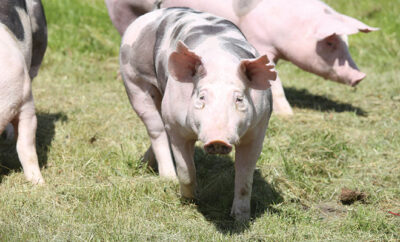
Ask the Cook
I count myself lucky to have a diverse group of friends of all ages and cultural backgrounds. Many of my friends possess formidable culinary skills. I’m in awe of my friend Angha, who can serve impressive seven-course meals of French, Italian, Moroccan, Indian or Thai dishes. My friend Jamey is well versed in authentic Mexican cuisine; I can ask her how to prepare fresh nopales (cactus leaves) or what epazote is used for. (It’s a leafy plant used in preparing simmered food, such as pinto beans.)
All of us are in different stages of learning when it comes to kitchen skills. Indeed, we each started at the same point of knowing very little. My first lesson in culinary confusion occurred at a pizza parlor in high school. As the new girl in town, I was out with a group of friends for the first time. When it came time to take our orders, mine was for an anchovy pizza. Everyone in the group questioned that choice, but I insisted that I wanted an anchovy pizza. In fact, I had confused the word anchovy with artichoke. I mistakenly believed that I was ordering a pizza with artichoke hearts. Needless to say, when my pizza arrived laden with an abundance of salt-packed tinned fish, nobody was interested in sharing it. I resolved to smile and eat my words, along with every bite of that pizza, with gusto in order to save face; that was a teachable moment.
A less stressful teachable moment came when I was given a new recipe. A friend who baked delicious biscotti gave me her recipe, which called for anise seeds and anisette. I realized I didn’t know anise from anchovies. With a little research, I learned that the anise plant, star anise seedpods and fennel all impart a licorice flavor in cooking, although true licorice is made from the root of yet another plant. Anise seeds are a baking spice; anisette is a Mediterranean liqueur made from the leaves of the anise plant or from roots of the licorice plant. Other liqueurs, such as Ouzo and Sambuca, are based on this flavor as well. How confusing!
Whether you’re dining out or cooking at home, a number of foods and cooking terms are confusing at first. Here is a list of my favorite culinary challenges. I know I owe a debt of gratitude to patient servers who explain how each dish is prepared, as well as to friends and family whose hands-on instruction in the kitchen helped me learn how to be a better cook. If you are familiar with all of these terms, take advantage of opportunities to share your knowledge. By doing so, you may help others avoid culinary consternation. Who knows, you may prevent an unwitting teenager from ordering an anchovy pizza.
Amuse bouche: Chefs send out this complimentary bite-sized appetizer at the beginning of a meal. Think of this as public relations at its best; it’s a showy little tidbit meant to welcome you to the table and whet your appetite.
Braise/Bake/Broil: Braising usually refers to meat, such as lamb shanks, or vegetables. The technique involves searing the ingredients, followed by clarifying the pan with stock or wine and slow cooking the covered dish at a very low temperature. Before serving, the liquid is often reduced. Baking means cooking food in an oven at a constant temperature. Broiling food involves using the heat from the broiling element, which is hotter than the highest oven temperature and is similar to a grill.
Chop/Dice/Mince: Food that is chopped will be in uniform squares, small enough for several to fit in a spoon, about 1/2 inch square. A dice is finer than chopped food at about 1/4 inch square. Minced food is cut with a knife until the pieces are as small as they can be cut.
Confit: This usually refers to a leg of fowl, usually duck, that is cooked slowly in its own fat.
EVOO: This acronym refers to Extra Virgin Olive Oil, produced by crushing olives (also called “cold-pressed”); it contains no additives or chemicals.
Flambé: When alcohol such as brandy or cognac is added to the cooking pan (often at the serving table) and is lit, dramatic flames are created.
Parchment or En Papillote: These are methods of steaming food in a pouch of cooking paper, which seals in juices.
Reduction: Liquids are reduced by simmering or boiling; this is usually done with a stock, a wine or cream sauce, or a balsamic vinegar.
Simmer/Boil: A boiling liquid will bubble and roll in the saucepan. Simmering occurs just before the boiling point; bubbles may appear at the edge of the pan, but will not cover the surface of the liquid.
Sweetbreads: Don’t mistake sweetbreads for bakery items. These are glands–the thymus gland or pancreas of veal, lamb or pork. HLM
Sources: bonappetit.com, foodsubs.com, francescad.hubpages.com, indiacurry.com, lifehacker.com and oliveoiltimes.com.







